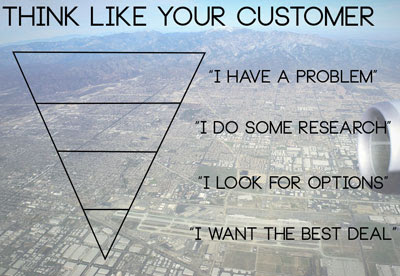Sales Newsletter #130 – Salespeople, Perspective, Comparisons

GREG’S RIGHT FIT NEWSLETTER #130
————————————————————
Quick notes to help you get more sales and marketing done in less time. . . next week.
In this issue:
– Techniques for FIT
– Being Human
– Random Stuff
Techniques for FIT
————————————————————
- Great salespeople are made, not born. It takes training, practice, and support. Good news if you’re trying to build a high performance sales team.
- If motivation is more intrinsic than extrinsic, what sense does it make to assign sales quotas? There should be a minimum acceptable performance standard, but work to pull goals out versus allocating a percentage from above.
- Underperforming sales reps do double damage. Not only do they fail to reach your minimum acceptable standards, they give your highest performers an excuse to put in less effort.
- The player/coach is a myth. Invest in a coach for your sales team. Find one that focuses on process, training, practice, and support. And whatever you do, stay away from the temptation to convert a top sales performer.
Being Human – More on perspective
————————————————————
Fees and Negotiation

A lot of my time is spent talking about money. I tell everyone that it’s only 1 of the Big 3 resources needed for a successful outcome (timing and people are the others) but money is the one that gets the pupils to widen and palms to dampen. We can debate whether or not it’s the most important of the Big 3, but heading into this weekend, let’s briefly focus on how to talk about fees and the right time to negotiate.
I dug up this old slide, “How Decisions are Made:”

Money comes up a few times in a decision process, not just at the end. With that in mind, discussions about money don’t always signify a classic “negotiation.”
Here’s my quick example: early in the decision making process, a broad decision has to be made on budget. Like, my soon to be college-bound kid needs a laptop for school. Before I get into the “negotiate the best price” phase of my decision, I need to decide how much I’m willing to spend.
That “budget” number is rarely set in stone. Especially if I have little to no experience in purchasing laptops. To set a budget, I think back to similar purchases, check in with friends, get spousal approval and move to the next step. That number in my head, ”$1000″ for instance, may be 25-50% off from what I actually spend.
Contrast that with my “negotiation” number. Once I’ve decided on the 13″ Apple MacBook Air, published price $1199, I go looking for the best price. That price may be 2-3% different from what I spend.
My point is, a lot happens in between research and the purchase. A lot of work goes into figuring out what my desired outcome is, if the initial investment number will make that happen, and whether the investment or my desired outcome might change.
My advice is to get good at determining where you’re at in the decision making process and learn to talk about money in the correct context.
When you’re in the “ballpark” phase of resource allocation, the numbers can be off by anywhere from 25-50%. If we’re talking about a $10 Million dollar problem, the solution may run $1 to 1.5MM to fix it. In that case, a ballpark discussion of money may be off by as much as $500,000. The CFO may hate that, but she’ll appreciate knowing up front if she’s only budgeted $100,000 to fix the problem.
Armed with ballpark information, she knows that something needs to change. Either it’s the desired outcome (fixing 100% of the $10MM problem) or her Investment (the budget of $100K) needs to change.
We all know what “too good to be true” is, but that doesn’t stop us from wanting it. I may want to send my kid to school with a laptop that’s only $250 bucks, but my path lies somewhere between my aspirations and reality.
Know where you’re at in the “process” and talk about money as stress free as you discuss timing and people.
Good stuff.
Random Stuff
————————————————————
Comparisons
Short NBA players are tall. The poorest Fortune 500 CEO is wealthy. The slowest Olympian in the 100 meter finals is incredibly fast. I was reminded of this when handing my little book to a prospect. He was genuinely impressed and asked how many books I’ve written. I said something like, “Well, technically that’s my first commercially published book,” and then told him about my attempt at a novel and my little self-published booklets in an aww-shucks kind of way.
“Hey,” he said, shrugging his shoulders, “I haven’t written any.”
It got me thinking about comparisons and lists and our seemingly innate ability to instantly size up and rank almost anything we bump into. It probably explains why I can’t resist peeking at listicles or memes like, “#Mbappe is 19 and he ripped up Argentina. . .when I was 19 . . .” Although I’ve had a hard time remembering what I was doing at that age.
This week my brother-in-law pointed out when I was 19 it was only 12 months from Coors Light introducing the Party Ball . . . which pretty much cleared out pre-1989.
Makes sense now.
Booking Calendar
————————————————————
If you need to set up a time to visit, follow this link:
https://calendly.com/chamberspivot/
